Hello, everyone. My name is Daichi, an expert providing the information on the radiation issues in an easy-to-understand manner.
Today, I would like to respond to the following question(s)/request(s):
– I have often hear the word ‘External exposure’ and ‘Internal exposure’, and I would like to know the difference between these words, and I also would like to know, how much dose are Japanese people and people in the world exposed to.
Table of contents of this article
- (They are around us) What is the external exposure and internal exposure?
- What are the specific examples of external exposure?
- What are the specific examples of internal exposure?
- How much dose do Japanese people and people in the world usually get?
- Impact on people’s health caused by exposure to radiation
- Summary
I have been involved with the radiation-relevant issues, like the policy on the decontamination activities and the management of the Interim Storage Facility, after the accident of the Fukushima Daiichi Nuclear Power Plant in 2011.
I received a doctorate in the field of radiation, while working in Fukushima.
(They are around us) What is the external exposure and internal exposure?
When considering the exposure to people, meanings of the external exposure and the internal exposure are, as their words represent, as follows:
– External exposure: exposure to radiation derived from radioactive materials outside human body
– Internal exposure: exposure to radiation derived from radioactive materials inside human body
What are the specific examples of external exposure?
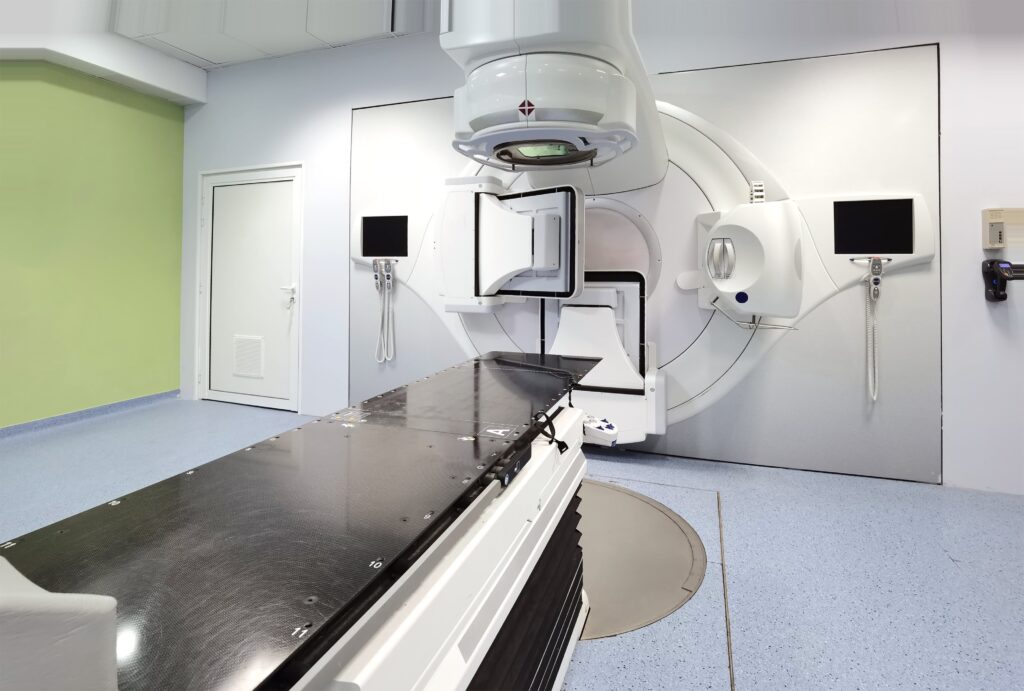
The external exposure derives not only from the radioactive materials released into the environment caused by accidents of nuclear power stations, terrorism or nuclear tests, but also from radiation which exists around us under normal situations e.g.:
– Cosmetic ray continuously coming from outer space down to earth
– Radiation emitted from radioactive materials on surface of the earth or in the atmosphere
– Medical exposure (e.g. Computed Tomography)
We are always in the environment of the external exposure derived from radiation.
What are the specific examples of internal exposure?

Regarding the internal exposure, as is the case with the external exposure, it is not an unusual exposure under the urgent environment like the aftermath of accidents of nuclear power plants, terrorisms or nuclear tests.
We are internally exposed to radiation in our daily life e.g.:
– Intake of radon through inhalation
– Intake from skin
– Diet
– Medical exposure (e.g. radioactive tracer)
The amount of radon taken depends on residential areas or structure of residences, and the amount of radioactive materials taken from diet is of course affected by the content of the diet.
We are, however, anyway always exposed to radiation within our body.
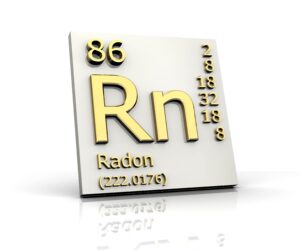
How much dose do Japanese people and people in the world usually get?
Then, to how much radiation are Japanese or people in the world usually exposed?
The following figure shows the annual dose (mSv/y) of Japanese people in their daily life.
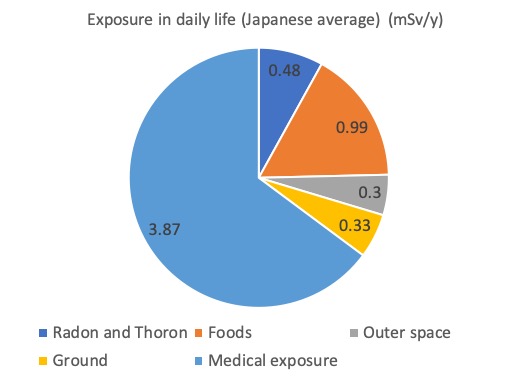
– Radon and Thoron (one of the radioisotopes of radon. Please refer to this website): 0.48
– Foods: 0.99
– Outer space: 0.3
– Ground: 0.33
– Medical exposure: 3.87
————————-
– Sum: 6.0
Source: Created based on the 2008 UNSCEAR (United Nations Scientific Committee on the Effects of Atomic Radiation) Report; and ‘Environmental Radiation in Daily Life (2011)’, Nuclear Safety Research Association
On the other hand, the following figure shows the annual exposure (mSv/y) dose of people in the world in their daily life.
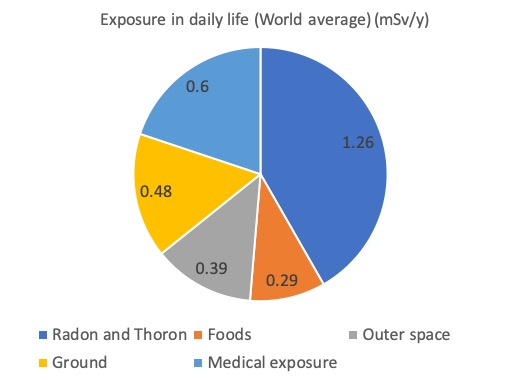
– Radon and Thoron: 1.26
– Foods: 0.29
– Outer space: 0.39
– Ground: 0.48
– Medical exposure: 0.6
————————-
– Sum: 3.0
Source: Created based on the 2008 UNSCEAR (United Nations Scientific Committee on the Effects of Atomic Radiation) Report; and ‘Environmental Radiation in Daily Life (2011)’, Nuclear Safety Research Association
The point we can notice here, is that whole dose to Japanese people and people in the world are around 6 mSv/y and 3 mSv/y, respectively: Japanese people are exposed around twice as much as radiation compared with people in the world on average.
The breakdown of the exposure shows the characteristic that Japanese people are less exposed to the radiation derived from radon and thoron, but a bit more from foods and much more from medical exposure.
Mainly exposure derived from radon and thoron occurs indoors.
Therefore, well-ventilation of Japanese residences could attribute to this less exposure.
Moreover, it is regarded that more consumption of fish and Japanese periodical health check system could contribute to the much exposure from foods and medical exposure, respectively.
Impact on people’s health caused by exposure to radiation
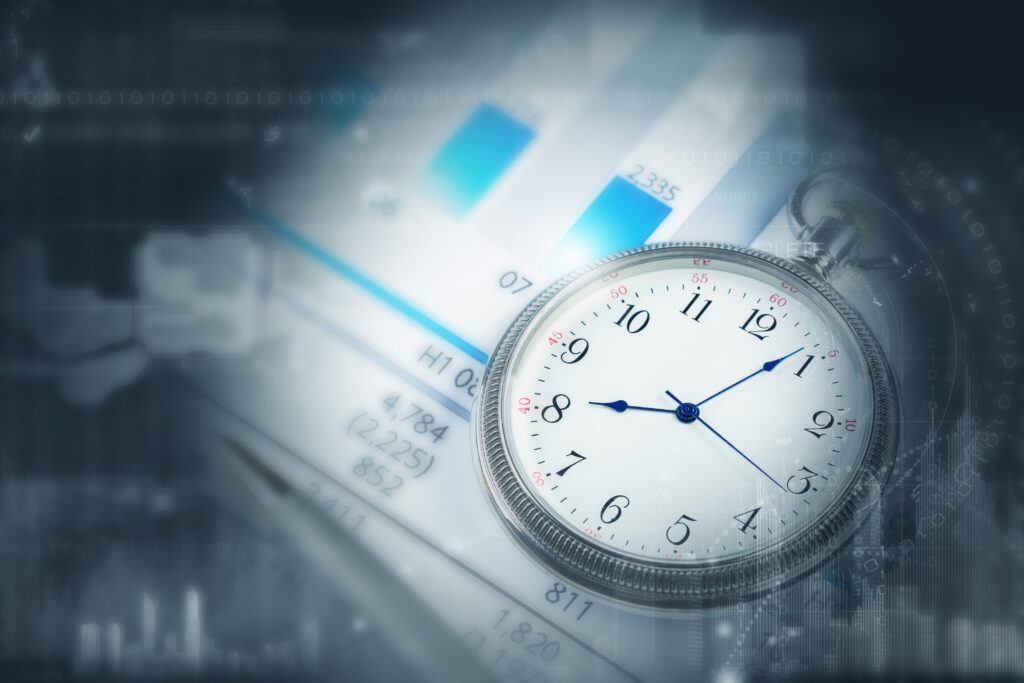
As explained this article, impact on human body by exposure to radiation is represented with unit of Sievert (Sv).
Accurate effective dose can be calculated based on the kinds of radiation or kinds of organs exposed to radiation, as explained in this article.
In other words, the impact on human body depends on the following factors e.g.:
– Dose
– Part of the body exposed to radiation
– Kinds of radiation
– Exposure time
Not only the fact that they are exposed to radiation, but also the factors above need to be taken account of to evaluate the impact.
There are, however, a lot of knowledge and data representing tendency or symptoms regarding the relationship between dose and impact on human body, and they are elaborated in this article, this article, this article and this article.
Summary
Both the external and internal exposure derived from radioactive materials are not something special at all, but something existing around us including on earth, within atmosphere and even in our daily diets.
The average dose to Japanese people is around twice as much as the dose to people in the world, and this attributes to the Japanese daily diets, structure of residences, health check system and so on.
Not every exposure to people causes negative effect on human body, but it depends on the amount of radiation, exposure time or other kinds of factors.
By the way, the following videos are created, which explain the almost same contents above.
Please take a look at them at your convenience.
– Japanese version
– English version
This is the end of this article.
You can read the same article in Japanese here.
Thank you very much for reading this article.
See you next time!



コメント